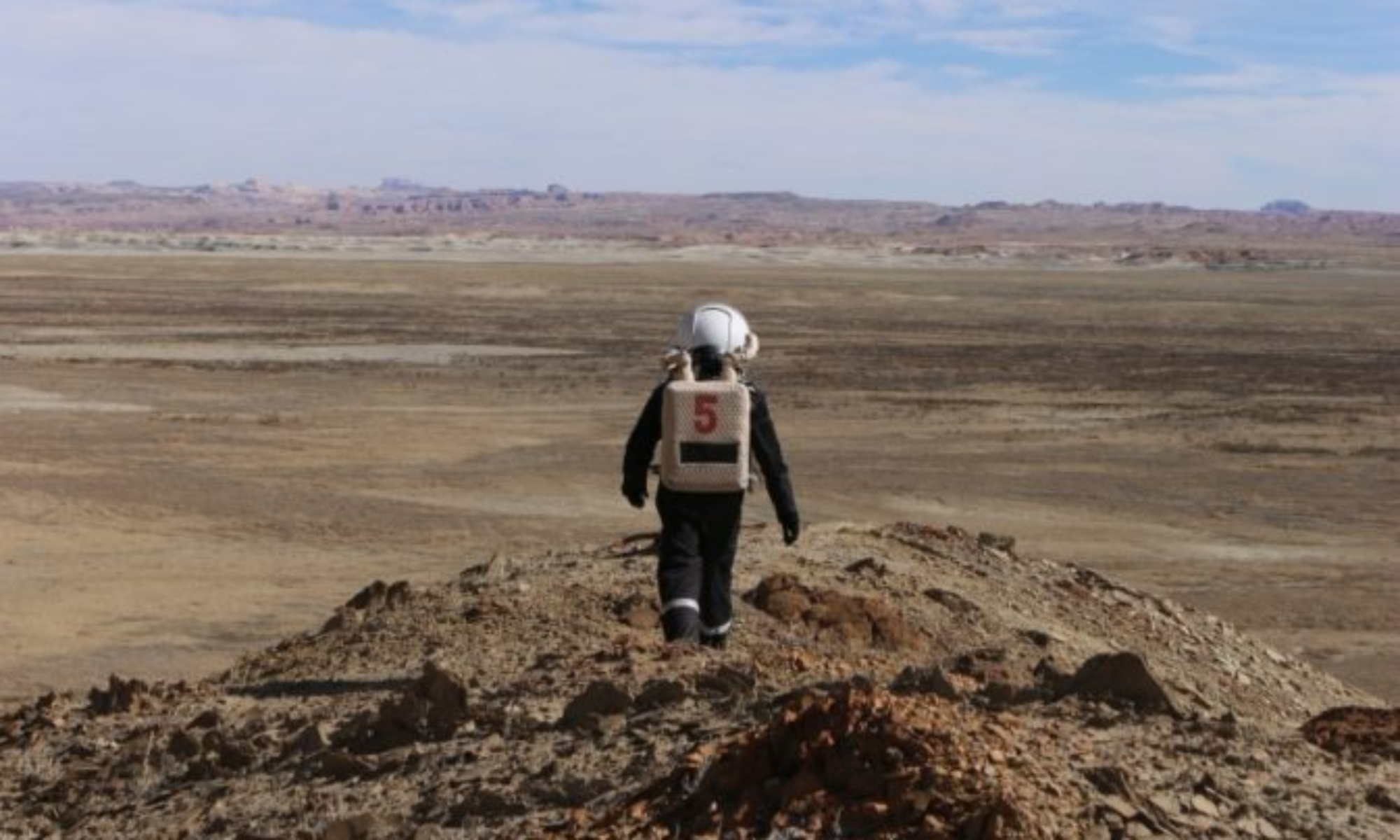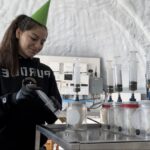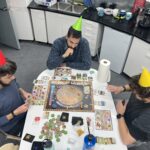Perseverance
“"The master has failed more times than the beginner has even tried.” – Stephen McCranie
If asked what encompasses the job of an astronaut, a suitable definition could be pushing the boundaries of what has yet been explored, defying all odds towards the understanding of the unknown. However, this description (and similar ones in the same fashion) also applies to the role of a scientist, who, perhaps a bit differently, goes beyond the surface in the comfort of a lab with a coffee in their hands. Naturally enough, all of us from Crew Montes are scientists conducting our own experiments – breaching the limits of human knowledge both from the comfort of our workspace and from the dangers of Martian atmosphere.
In Sol 9, however, our crew focused our day wearing our scientist hats, improving our research inside the hab (even though I must point out that these hats were also a celebration of New Year’s Eve). After three exhausting EVA days in a row, this much needed break could well be interpreted as a voluntary choice of prudence and wisdom as we approach the end of our mission – but that is not fully true. In fact, the crew was still (ever so slightly) craving another EVA for more data collection, but science doesn’t really work that way. In reality, our planned EVA was cancelled at the last minute due to technical difficulties with the LIDAR software for our drone project, reflecting an essential part of the scientific process: frustration.
It is a natural step in the research process to reach a point where the scientist feels stuck, unmotivated or straight-up blocked in their entirety. When expanding the domain of their knowledge (and, as a consequence, human knowledge), the scientist must face their own limitations face-to-face, all the while keeping a humble mindset towards their own preconceived assumptions about the area they are exploring. At that point, admitting their ignorance is not only an act of noble sacrifice, but a necessary step in advancing the questions that lead to novel, meaningful contributions to their peers and community in general. The alternative to self-criticism in such circumstances is, instead, an investigation of a problem that is considered too trite rather than intriguing enough, innovative enough, or worth addressing altogether. It is through this procedure, thus, that the scientist can experience the infamous eureka moment, where a "stroke of inspiration" seems to be responsible for an idea that would be considered "brilliant", or ultimately a "revelation" or "breakthrough".
As my research progressed through a deeper level of complexity, integrating more sensors (like a GPS and gyroscope) into the drone data collection software was the obvious choice to obtain quality mappings of Mars. However, I soon realized that this software frenzy would not be an easy task to manage, and what had been an incremental improvement in my research quickly manifested into pure chaos. This chaos usually comes for us scientists in a form that we are all way too familiar with and completely adore: a computer bug. In face of adversity, it is the mission of a scientist to stay resilient and adapt to circumstances, but on Mars, being an astronaut requires a quick turnaround. No time to waste.
Concurrently, Messiah would continue his work on crafting an in-situ solar panel using materials from the Martian soil. Timely enough, though, he faced a major challenge today that could potentially dictate the future steps of energy generation on the Red Planet: the richest soil samples in iron content were found to fall short in a ratio of around 50x less than what was required. That means that, to avoid carrying tons of sand in the EVA, there needs to be a more efficient way to collect the iron present in those samples on-site. By envisioning new methods of collecting these rich samples more efficiently, he plans to contribute to the successful creation of solar panels using in-situ resources that could revolutionize energy generation in the long term.
Similarly, the time in the hab today was valuable to debug the robotics integration software for my research experiment, and a clear path forward was forged. In the next days, my focus will be to demonstrate data collection in the form of GPS, barometric altitude, gyroscopic orientation and LIDAR scans, which can ultimately be blended together for the creation of 2D maps of the terrain. If successful, such method can be used in the future for autonomous landers that will pave the path to future manned missions to Mars.
An astronaut’s job is to keep persevering no matter the circumstances. No matter how dark the space ahead of us might be, our steps must lead to an untapped territory, progressively expanding the map known to man. The scientist and the explorer are tasked with the same goal: shedding light into the chasm of ignorance, starting with their own. And perhaps even more importantly, it is the responsibility of the Martian astronauts, scientists and explorers to bring light into our paths and the paths of all the ones coming behind us.
Hermit out.





You must be logged in to post a comment.